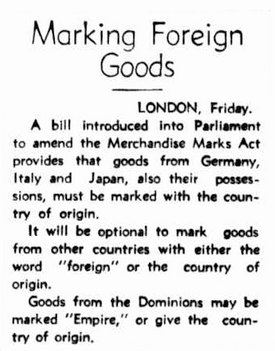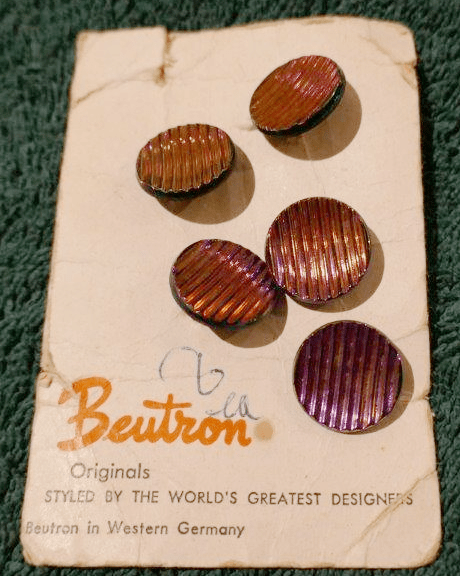“Foreign” Buttons
Collectors like to know where, when and by whom, their treasures have originated. Whatever the appeal of a style or type of product to a given collector, knowing the “story” of the item adds to our collecting pleasure. So what to make of buttons back-marked, or cards of buttons stamped or printed with ‘Foreign’?
It often indicates that the items were intended for export to Britain or America, but not where they were made.
In 1887 the ‘British Merchandise Marks Act’ required goods imported into Britain to be marked with the country of origin. The main target of this legislation was Germany, suspected of copying British goods to the detriment of British manufacturers. In the USA the 1890 Tariff Act (a.k.a.’McKinley Tariff’) was introduced. Imported goods attracted very high tariffs, and were to be marked ‘Foreign’, although this requirement was soon amended to show the country of origin.
None-the less, the term ‘Foreign’ was used intermittantly and legally for years, whenever it was politically expedient, so isn’t a good indication of date or country of manufacture.

Advocate(Burnie, Tas), 8th July 1939 page 1. I don’t know if this Act was passed.
The Acts were not effective as intended, as “Made in Germany” came to indicate a quality product, and actually increased consumption! The McKinley Act was unpopular as it resulted in significant price increases, and resulted in losses at the polls.
I have 1940-1950s glass buttons (i.e. imported) on cards branded with Australian distributors or stores, for example Walkers and Myers. These are not marked ‘Foreign’ or with any indication as to origin. Were buttons imported here not required to be so marked? Did they get around any such legislation by carding the buttons locally? G. Herring marked some, but not all, of their imported glass buttons as from ‘Western Germany’.

For all comments or questions, please use the Contact page.
